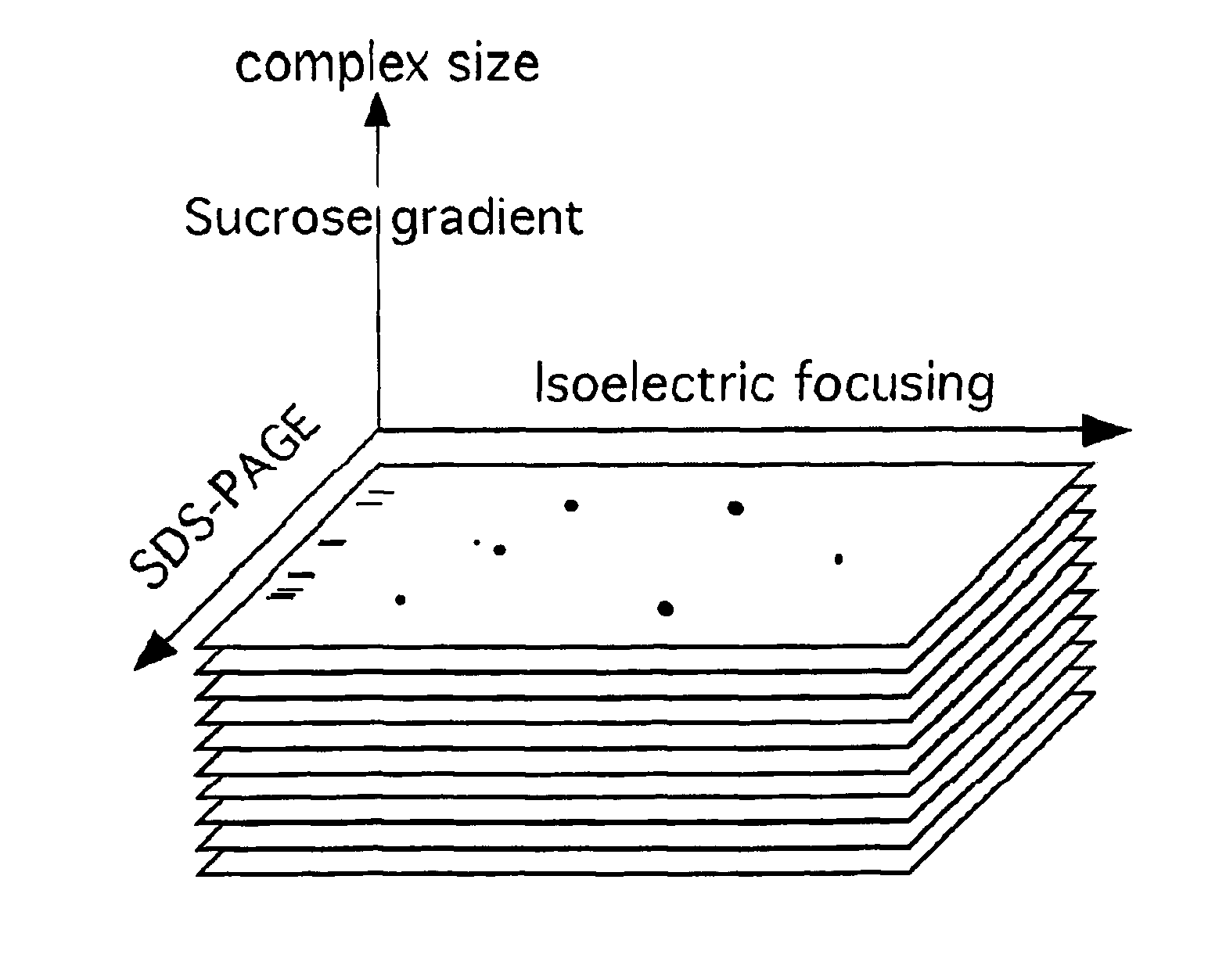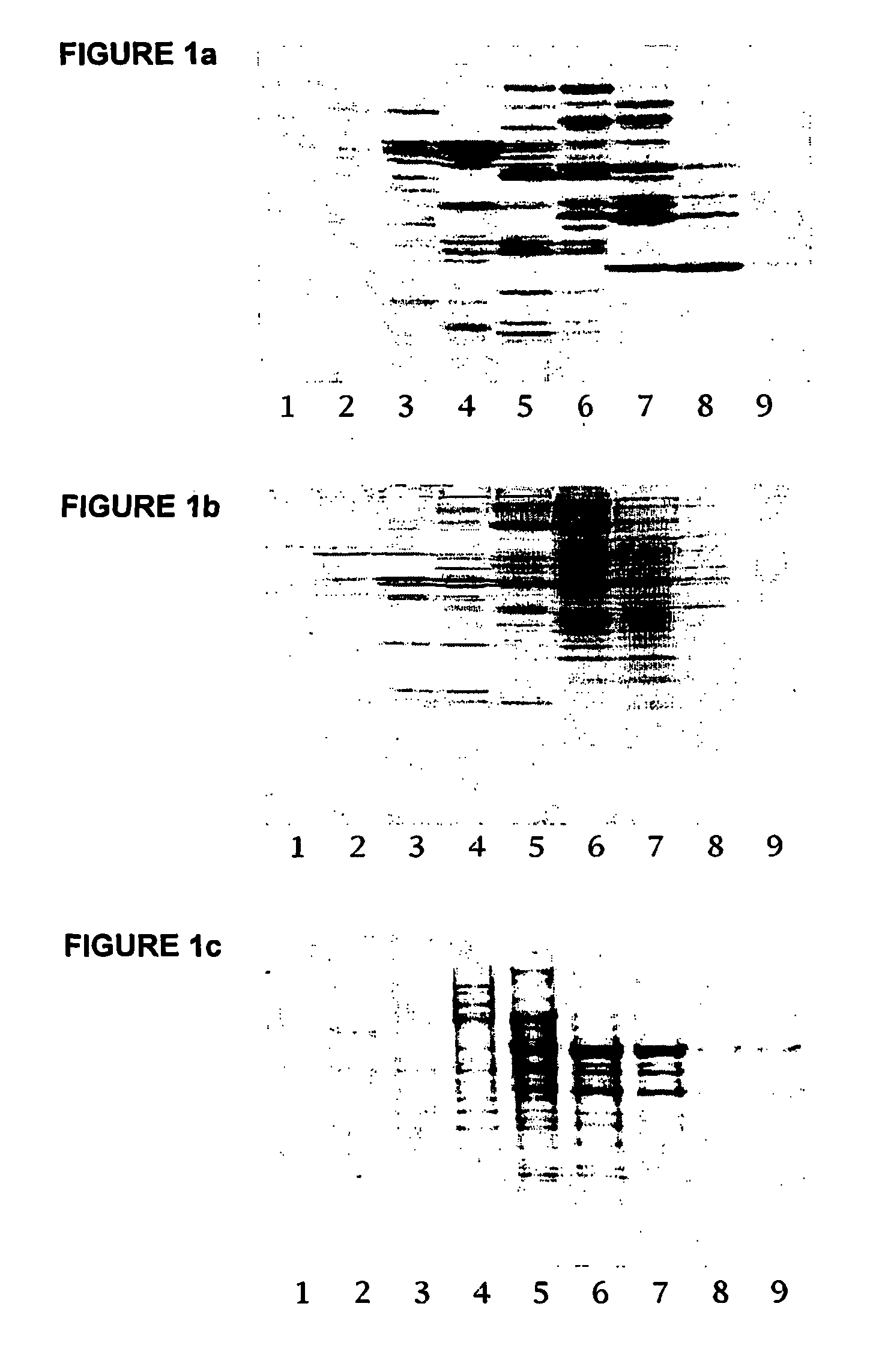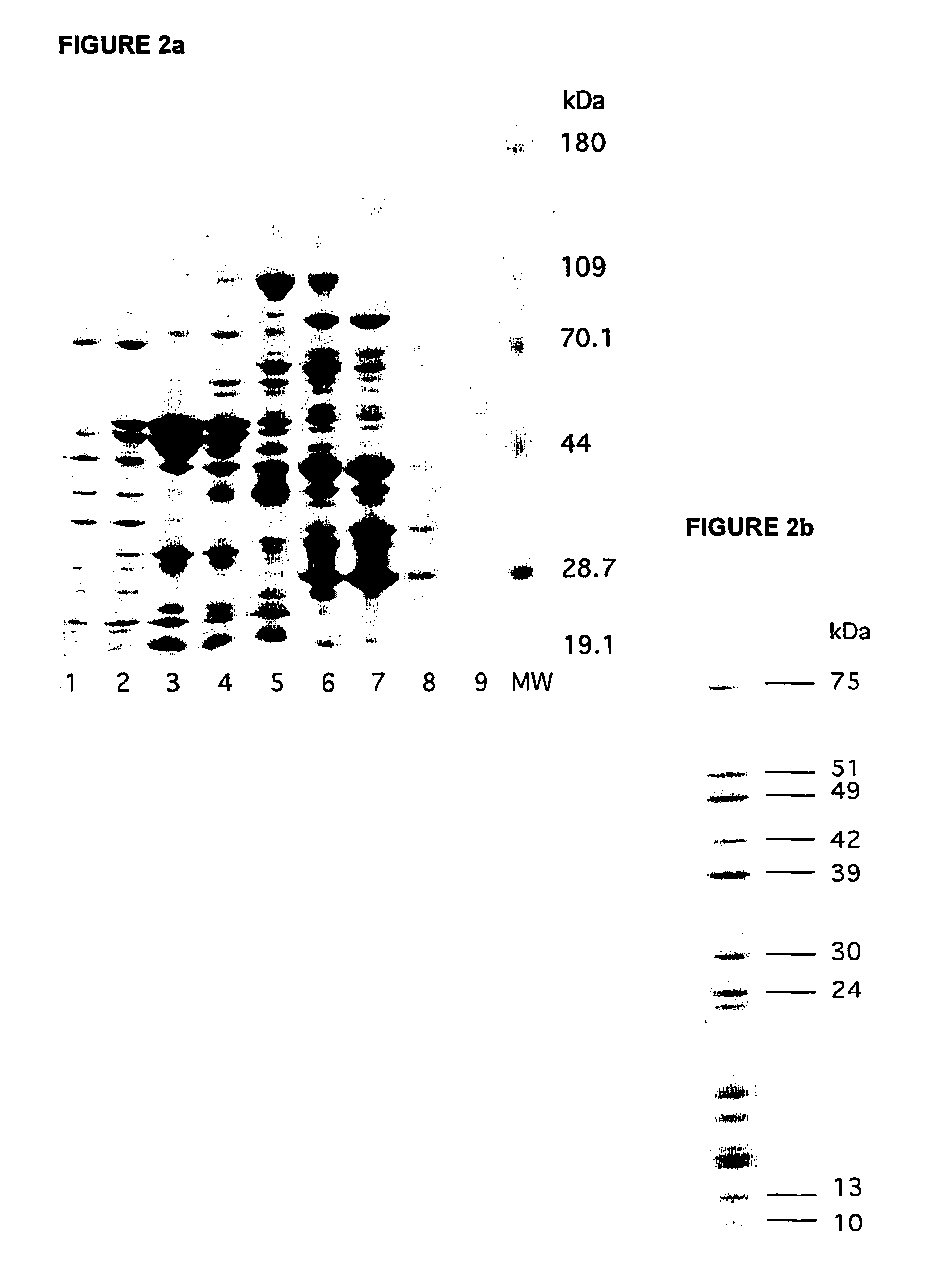Enhanced protein separation and analysis
a protein and protein technology, applied in the field of proteomics, can solve the problems of large number of spots not optimally separated, difficult to solubilize isoelectric focusing, and little information about the assembly state or functionality of individual protein complexes, and achieve the effect of dramatically improving proteome analysis
- Summary
- Abstract
- Description
- Claims
- Application Information
AI Technical Summary
Benefits of technology
Problems solved by technology
Method used
Image
Examples
example 1
Preparation of a Biological Sample
[0094] This example provides descriptions of how one sample type, isolated mitochondria, can be prepared from various tissues for analysis using the separation systems described herein. Other tissue, cell, or subcellular preparations also can be examined; such samples can be prepared using any conventional means.
[0095] In certain embodiments, it is beneficial that the final preparation is not substantially denatured (e.g., so that in vivo protein-protein interactions have been substantially maintained). In general, the more pure the target sample is, the better the results will be from the proteomic analysis.
[0096] Preparation of Mitochondria from Bovine Heart
[0097] All steps for purifying mitochondria were done at 4.degree. C. unless otherwise stated.
[0098] The ventricles of a fresh bovine heart were cleaned of any connective tissue and fat before being minced into small pieces. About 600 ml of a Tris / sucrose buffer (0.2 mM EDTA, 0.25 M sucrose, 10...
example 2
Non-denaturing Separation of the Biological Sample
[0105] This is a representative example of a non-denaturing separation technique, discontinuous sucrose gradient analysis, which can be used to separate biological components based on their protein-protein interactions.
[0106] Separation of Mitochondrial Proteins by Sucrose Gradient Fractionation
[0107] Two slightly different sucrose gradients have been employed for the separation of mitochondrial complexes after extraction. The first gradient is optimized for the purification of the respiratory chain complex I, whereas the second is optimized for the use in 2-DE (two dimensional electrophoresis). These gradients are referred to herein as gradient A and gradient B, respectively.
[0108] Mitochondria prepared from three different sources (bovine heart, cultured MRC-5 fibroblasts, and human brain) as described above, were solubilized for analysis using 1% LM. Mitochondria (1-5 mg) were pelleted (TLA 100.2 Beckman rotor, 10,000.times.g, 10 ...
example 3
Denaturing Separation of the Biological Sample
[0109] This example provides one method for further separating proteins in fractions of a sucrose gradient, using denaturing gel electrophoresis, specifically SDS-PAGE. In some embodiments, this separation step is performed immediately after separation of the sample using a non-denaturing system (e.g., sucrose gradient fractionation). In other embodiments, fractionated samples are first subjected to isoelectric focusing gel analysis, then applied to a denaturing gel for final analysis.
[0110] For SDS-PAGE analysis, 10-20 .mu.l of each fraction was loaded per lane. The composition of fractions after SDS-PAGE and subsequent staining with SyproRuby.TM. protein gel stain is shown in FIG. 1.
[0111] Results
[0112] There is considerable difference in the overall staining pattern between the three different tissue samples, but this is to be expected for several reasons. First, heart tissue is rich in mitochondria and the mitochondria are easily pur...
PUM
| Property | Measurement | Unit |
|---|---|---|
| Size | aaaaa | aaaaa |
| Electric charge | aaaaa | aaaaa |
| Interaction | aaaaa | aaaaa |
Abstract
Description
Claims
Application Information
 Login to View More
Login to View More - R&D
- Intellectual Property
- Life Sciences
- Materials
- Tech Scout
- Unparalleled Data Quality
- Higher Quality Content
- 60% Fewer Hallucinations
Browse by: Latest US Patents, China's latest patents, Technical Efficacy Thesaurus, Application Domain, Technology Topic, Popular Technical Reports.
© 2025 PatSnap. All rights reserved.Legal|Privacy policy|Modern Slavery Act Transparency Statement|Sitemap|About US| Contact US: help@patsnap.com



